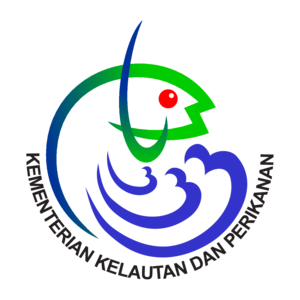DIVERSITY INVENTORY OF ASSOCIATED BIOTA IN MANGROVE RESTORATION AND LEARNING CENTER, SIMEULEU REGENCY AS PUBLIC INFORMATION
Abstract
References
Affan, J. M. (2010). Analisis potensi sumber daya laut dan kualitas perairan berdasarkan parameter fisika dan kimia di pantai timur Kabupaten Bangka Tengah. Spektra, 10(2): 99-113.
Akbar, N., Ibrahim, A., Haji, I., Tahir, I., Ismail, F., Ahmad, M., & Kotta, R. (2018). Struktur Komunitas Mangrove Di Desa Tewe, Kecamatan Jailolo Selatan, Kabupaten Halmahera Barat Provinsi Maluku Utara. Jurnal Enggano, 3(1): 81-97.
Aksornkoae, S. (1993). Ecology and Management of Mangrove. Thailand: IUCN.Budiman, A. (2009). Persebaran dan pola kepadatan moluska di Hutan bakau. Berita Biologi, 9(4): 403-409.
Alamsyah, R., Marni, M., Fattah, N., Liswahyuni, A., & Permatasari, A. (2019). Laju Dekomposisi Serasah Daun Mangrove di Kawasan Wisata TongkeTongke Kabupaten Sinjai. Agrominansia, 3(2), 72–77. https://doi.org/10.34003/279690
Al Idrus, A., Ilhamdi, M. L., Hadiprayitno, G., & Mertha, G. (2018). Sosialisasi Peran dan Fungsi Mangrove pada Masyarakat di Kawasan Gili Sulat Lombok Timur. Jurnal Pengabdian Magister Pendidikan IPA, 1(1), 52–59. https://doi.org/10.29303/jpmpi.v1i1.213
Ario, R., Subardjo, P., & Handoyo, G. (2016). Analisis Kerusakan Mangrove Di Pusat Restorasi Dan Pembelajaran Mangrove (PRPM), Kota Pekalongan. Jurnal Kelautan Tropis, 18(2), 64–69. https://doi.org/10.14710/jkt.v18i2.516
Ariyanto, D. (2019). Food Preference on Telescopium telescopium ( Mollusca : Gastropoda ) Based on Food Sources In Mangrove. Plant Archives, 19(1):913–916.
Atnasari., Anthoni, B. A., Helena, S. 2020. Kelimpahan dan Keanekaragaman Gastropoda di Kawasan Mangrove Desa Bakau Besar Laut Mempawah. Jurnal Laut Khatulistiwa, 3(3):97-104
Aung, T.T. (2022). Mangroves in Myanmar. In Mangroves: Biodiversity, Livelihoods and Conservation; Das, S.C., Pullaiah, T., Ashton, E.C., Eds.; Springer Nature: Singapore. pp. 331–371
CBD (Convention on Biological Diversity). (2012). Impacts of Marine Debris on Biodiversity, Current Status and Potential Pollution. Canada: CBD Technical Series.
Cole, M., Lindeque, P., Halsband, C., Galloway T. (2011). Microplastic as contaminants in the marine environment: a review. Mar. Pollut. Bull., 62(12): 2588-2597.
Dasgupta, R., Hashimoto, S., Saito, O. (2022). Fostering Mangrove Ecosystem Services for a Resilient Future for the Asia-Pacific Region: A Knowledge Synthesis. In Assessing, Mapping and Modelling of Mangrove Ecosystem Services in the Asia-Pacific Region; Springer Nature: Singapore. pp. 283–292.
Decree of the Minister of State for the Environment No. 51 of 2004, concerning Seawater Quality Standards for marine biota.
Descasari, R., Setyobudiandi, I., & Affandi, R. (2016). Keterkaitan ekosistem mangrove dengan keanekaragaman ikan di Pabean Ilir dan Pagirikan, Kabupaten Indramayu, Jawa Barat. Bonorowo Wetlands, 6(1): 43-58.
Djohar, M. A., Boneka, F. B., Schaduw, J. N. W., Mandagi, S. V., Roeroe, K. A., & Sumilat, D. A. (2020). Marine waste, analysis, and abundance of Gastropods in mangrove ecosystem Tongkaina, North Sulawesi. JIP, 8(1): 15-23.
Dharmawan IWE, Suyarso, Ulumuddin YI, Prayudha B, Pramudji. (2020). Panduan Monitoring Struktur Komunitas Mangrove di Indonesia. Pusat Penelitian Oseanografi, LIPI, Jakarta.
Dorenbosch, M., Verweij, M. C., Nagelkerken, I., Jiddawi, N., & Van Der Velde, G. (2014). Homing and daytime tidal movements of juvenile snappers (Lutjanidae) between shallowwater nursery habitats in Zanzibar, Wetern Indian Ocean. Environ. Biol. Fish., 70(3): 203-209.
Fratini, S., Cannici, S., & Vannini, M. (2001). Feeding clusters and olfaction in the mangrove snail Terebralia palustris (Linnaeus) (Potamididae: Gastropoda). J. Exp. Mar. Biol. Ecol., 261(2): 173-183.
Gedan, K.B., Kirwan, M.L., Wolanski, E., Barbier, E.B., and Silliman, B.R. (2011). The Present and Future Role of Coastal Wetland Vegetation in Protecting Shoreline: Answering Recent Challenges to the Paradigm. Climatic Change. 106: 7-29.
Gunaalan, K., Fabbri, E., Capolupo, M. (2020). The hidden threat of plastic leachates: a critical review on their impacts on aquatic organisms. Water Res. 184, 116170 https://doi.org/10.1016/j.watres.2020.116170.
Gunarto. (2004). Konservasi mangrove sebagai pendukung sumber hayati perikanan pantai. Jurnal litbang pertanian 23(1): 15-21.
Guzzetti, E., Sureda, A., Tejada, S., Faggio, C. (2018). Microplastic in marine organisms: environmental and toxicological effects. Environ. Toxicol. Pharmacol. 64 :164e171.
Harap, N. (2009). Pengaruh ekosistem hutan mangrove terhadap produksi perikanan tangkap (studi kasus di Kabupaten Pasuruan Jawa Timur. J. Fish Sci., 11(1): 100-106.
Harshith, U.P., Apoorva, M.D., D’Silva, P., & D’Lima, A.D. (2016). Crabs Diversity In Mangrove And Coastal Ecosystem. The 10th Biennial Lake Conference, Karnataka, India. 360-366
Hiwari, H., Purba, N. P., Ihsan, Y. N., Yuliadi, L. P. S., & Mulyani, P. G. (2019). Condition of microplastic garbage in sea surface water at around Kupang and Rote, East Nusa Tenggara Province. National Proceeding of Biodiversity Society, 5(2), 165–171
Huang, D. Y., Wang, J. J., Chen, G. L., and Zheng, X. Q. (2021). Community structure and ecological warning of reef-associated fish and macrobenthos in the Yalong Bay. Chin. J. Ecol. 40, 412–426
Hutchison, J., Manica, A., Swetnam, R., Balmford, A., Spalding, M. (2014). Predicting global patterns in mangrove forest biomass. Conservation Letters, 7(3): 233-240.
Isnaningsih, N.R. & Patria, M.P. (2018). Perankomunitas Moluska dalam mendukung fungsi kawasan mangrove di Tanjung Lesung, Pandeglang, Banten. J. Biotropika, 6(2): 35-44.
Jantz, L. A., Morishige, C. L., Bruland, G. L., & Lepczyk, C. A. (2013). Ingestion of plastic marine debris by longnose lancetfish (Alepisaurus ferox) in the North Pacific Ocean. Mar. Pollut. Bull., 69: 97-104.
Jumaedi S. (2016). Nilai manfaat hutan mangrove dan faktor-faktor penyebab konservasi zona sabuk hijau (Greenbelt) menjadi tambak di Wilayah Pesisir Kota Singkawang Kalimantan Barat. Sosiohumaniora, 18 (3): 227-234.
Kabir M., Abolfathi M., Hajimoradloo A., Zahedi S., Kathiresan K., Goli S. (2014) Effect of mangroves on distribution, diversity and abundance of molluscs in mangrove ecosystem: a review. AACL Bioflux 7(4):286-300.
Kigpiboon, C. (2013). The development of participated environmental education model for sustainable mangrove forest management on Eastern Part of Thailand. IJSDWP, 2(3): 33-49.
Kusumawardani, S. (2015). Keanekaragaman, distribusi dan kelimpahan fauna lantai di ekosistem mangrove Laguna Bogowonto, Kulon Progo, Yogyakarta. Skripsi. Fakultas Sains dan Teknologi: UIN Sunan Kalijaga.
Lasalu, N., Sahami, F. M., & Kasim, F. (2015). Komposisi dan keanekaragaman gastropoda ekosistem mangrove di Wilayah Pesisir Teluk Tomini sekitar Desa Tabulo Selatan Kecamatan Mananggu Kabupaten Boalemo Provinsi Gorontalo. Nike: Jurnal Ilmiah Perikanan dan Kelautan, 3(1): 25-31.
Lebreton, L. C. M., Van Der Zwet, J., Damsteeg, J. W., Slat, B., Andrady, A., & Reisser, J. (2017). River plastic emissions to the world’s oceans. Nature Communications, 8(September), 3–4.
Ma, W.; Wang, W.; Tang, C.; Chen, G.; Wang, M. (2020). Zonation of mangrove flora and fauna in a subtropical estuarine wetland based on surface elevation. Ecol. Evol., 10, 7404–7418
Nagelkerken, I. S., Kleijnen, T., Klop, R. A. C. J., Van den Brand, Cocheret de la, E., Moriniere, G., Van der Velde. (2000). Dependence of Carribean Reef Fishes on Mangroves and Seagrass Beds as Nursery Habitats: A Comparison of Fish Faunas between Bays with and without Mangroves/Seagrass Beds. MEPS, 214: 225-235.
Nayak, B., Zaman, S., Gadi, S.D., Raha, A.K., & Mitra, A. (2014). Dominant gastropods of Indian Sundarbans: A major sink of carbon. International Journal of Advances in Pharmacy, Biology, and Chemistry 3(2): 282-289
Nunoo, F.K.; Agyekumhene, A. (2022). Mangrove Degradation and Management Practices along the Coast of Ghana. Agric. Sci., 13, 1057–1079
Pecorino, D., Barker, M. F., Dworjanyn, S. A., Byrne, M., & Lamare, M. D. (2014). Impacts of near future sea surface pH and temperature conditions on fertilization and embryonic development in Centrostephanus rodgersii from northern New Zealand and northern New South Wales, Australia. J. Mar. Biol., 161: 101-110.
Perera, K. A. R. S., & Amarasinghe, M. D. (2019). Carbon Sequestration Capacity of Mangrove Soils in Micro Tidal Estuaries and Lagoons: A Case Study from Sri Lanka. Geoderma Journal, 347(2): 80-89.
Permatasari, D. R., & Radityaningrum, A. D. (2020). Kajian Keberadaan Mikroplastik di wilayah perairan: review. Seminar Nasional Sains dan Teknologi Terapan 8: 499-506.
Piranto, D., Riyantini, I., Kurnia, M. U. A., & Pribadi, D. J. (2019). Sediment characteristics and effect on abundance gastropod in the mangrove ecosystem in Pramuka Island. JPK, 10 (1): 20-28
Pratiwi, Y. (2010). Penentuan tingkat pencemaran limbah industri tekstil berdasarkan nutrition value coefficient bioindicator. Jurnal Teknologi, 3(2): 129-137.
Restu, R., Berutu, N., Ridha Syafii Damanik, M., & Suriani Harefa, M. (2017). Model of Mangrove Ecosystem Utilization as Media and Learning Resources of Environmental Education at Senior High School . https://doi.org/10.2991/icge-16.2017.64
Riniatsih, I., & Kusharton, E. W. (2009). Substrat dasar dan parameter oseanografi sebagai penentu keberadaan gastropoda dan bivalvia di Pantai Sluke Kabupaten Rembang. Ilmu Kelautan, 14(1): 50-59.
Rosyadewi, R., & Hidayah, Z. (2020). Perbandingan Laju Sedimentasi Dan Karakteristik Sedimen Di Muara Socah Bangkalan Dan Porong Sidoarjo. Juvenil: Jurnal Ilmiah Kelautan Dan Perikanan, 1(1), 75–86. https://doi.org/10.21107/juvenil.v1i1.6832.
Rosviani, L., Kusmana, C., Rachmawati, E., & Gunawan, H. (2022). Evaluation of the Implementation of Mangrove Thematic Environmental Education in Indramayu, West Java. IOP Conf. Ser.: Earth Environ. Sci. 1109 012038.
Sabar, M. (2016). Biodiversitas dan adaptasi makrozoobentos di perairan mangrove. Bioedukasi, 4(2): 529-539.
Sahwan, F. L., Martono, D. H., Wahyono, S., & Wisoyodharmo, L. A. (2005). Sistem Pengelolaan Limbah Plastik di Indonesia. J. Tel. Ling. PeTL-BPPT, 6(1): 311-318.
Smith, S. D. A. (2012). Marine debris: A proximate threat to marine sustainability in Bootless Bay, Papua New Guinea. Mar. Pollut. Bull., 64(9): 1880- 1883.
Smyth, K., Mazik, K., & Elliott, M. (2014). Behavioural effects of hypersaline exposure on the lobster Homarus Gammarus (L) and the crab Cancer pagurus (L). J. Exp. Mar. Biol., 457: 208-214
Soewandita, H., & Sudiana, N. (2010). Studi dinamika kualitas air DAS Ciliwung. JAI, 6(1): 24-33.
Spalding, M.; Parrett, C.L. (2019). Global patterns in mangrove recreation and tourism. Mar. Policy, 110, 103540
Spivak, E. D., & Cuesta, J. A. (2009). The effect of salinity on larval development of Uca tangeri (Eydoux, 1835) (Brach-yura: Ocypodidae) and new findings of the zoeal morphology. Sci. Mar., 73(73): 297-305.
Sussarellu, R., Suquet, M., Thomas, Y., Lambert, C., Fabioux, C., Pernet, M.E.J., Le Goïc, N., Quillien, V., Mingant, C., Epelboin, Y., Corporeau, C., Guyomarch, J., Robbens, J., Paul-Pont, I., Soudant, P., Huvet, A. (2016). Oyster reproduction is affected by exposure to polystyrene microplastics. Proc. Natl. Acad. Sci. U.S.A. 113, 2430–2435. https://doi.org/10.1073/pnas.1519019113.
Tapilatu, Y., & Daniel, P. (2012). Biota penempel yang berasosiasi dengan mangrove di Teluk Ambon bagian dalam. J. ITKT, 4(2): 267-279.
Tue, N. T., Hamaoka, H., Sogabe, A., Quy, T. D., Nhuan, M. T., & Omori, K. (2012). Food sources of macro-invertebrates in an important mangrove ecosystem of Vietnam determined by dual stable isotop signatures. J. Sea Res., 72: 14-21.
United Nations Environment Programme. (2005). Solid Waste Management Volume 1. Kenya: UNEP
United Nations Environment Programme. (2011). UNEP YearBook 2011: Emerging Issues in Our Global Environment. Kenya: UNEP
Watts, A. J. R., Urbina, M. A., Corr, S., Lewis, C., & Galloway, T. S. (2015). Ingestion of plastic microfibers by the crab Carcinus maenas and its effect on food consumption and energy balance. Environmental Science & Technology, 49(24), 14597-14604.
White, J.W., Botsford, L.W., Hastings, A., Baskett, M.L., Kaplan, D.M., Barnett, L.A.K. (2012). Transient responses of fished populations to marine reserve establishment. Conservation Letters 6: 180–191
Wright, S. L., Thompson, R. C., & Galloway, T. S. (2013). The physical impacts of microplastics on marine organisms: a review. Environt. Pollut., 178: 483-492.
Yonvitner, Wahyudin, Y., Mujio, & Trihandoyo, A. (2019). Biomasa Mangrove dan Biota Asosiasi di Kawasan Pesisir Kota Bontang. Jurnal Biologi Indonesia, 15 (1): 123-130. DOI: 10.47349/jbi/15012019/123
Yuwono, E., Jennerjahn, T. C., Nordhaus, I., Riyanto, E. A., Sastranegara, M. H., & Pribadi, R. (2007). Ecological status of Segara Anakan, Indonesia: A mangrove-fringed lagoon affected by human activities. Asian J. Water Environ. Pollut., 4(1): 61-70.
Zulkarnaini, Z. Saam, V. Amrivo, and D. Miswadi. (2017). Community Structure and Economic Evaluation Mangrove Village In Bengkalis District. International Journal of Oceans and Oceanography, 11(1): 63-74
DOI: http://dx.doi.org/10.15578/jkn.v19i2.13409
Copyright (c) 2024 Mai Suriani
Copyright of Jurnal Kelautan Nasional (p-ISSN 1907-767X, e-ISSN 2615-4579)
Pusat Riset Kelautan
Badan Riset dan Sumberdaya Manusia Kelautan dan Perikanan
Kementerian Kelautan dan Perikanan
Index by
 Jurnal Kelautan Nasional
Jurnal Kelautan Nasional
















